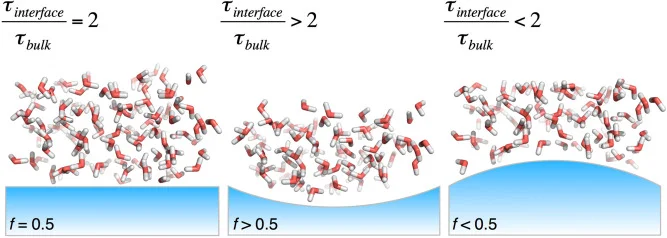Kevin J. Kubarych, Ved Prakash Roy, Kimberly R. Daley, Encyclopedia of Interfacial Chemistry (2018) 1, 443-461
Intense experimental, theoretical, and computational effort has been dedicated to characterizing the dynamics of water at interfaces. Experimental approaches employ variations of surface specificity through even-order nonlinear spectroscopy, or in isotopic samples using intrinsic or extrinsic probes coupled with ultrafast transient absorption, time-resolved fluorescence, multidimensional infrared, as well as nuclear magnetic resonance spectroscopy. Theoretical developments have focused on linking the interface-induced perturbations with the resulting motion of the hydrating water molecules, with a principal focus on changes in the free energy surface. Both theory and simulation have been instrumental in modeling the microscopic molecular dynamics as well as in computing experimental observables arising from the dynamics. This article provides an overview of experimental techniques that have been applied to study interfacial water dynamics, highlighting the numerous successes, as well as pointing out future directions. Since theoretical work is so central to the understanding of water, this article also outlines the extensive progress made using models and computational simulation.
